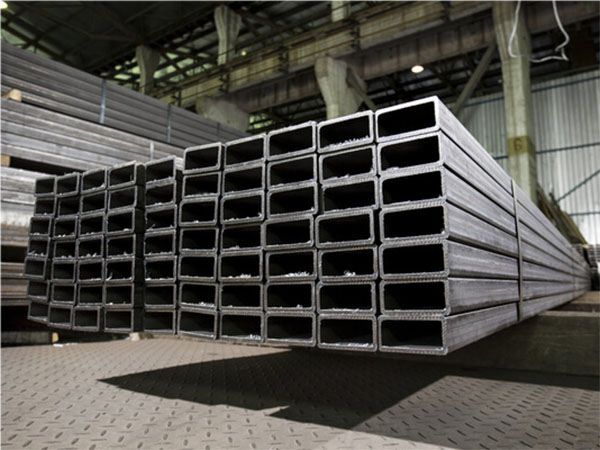Carbon steel rectangular tubes are rectangular hollow cross-section profiles made of carbon steel. Carbon steel is a widely used alloy, renowned for its strength and durability. This special rectangular cross-sectional shape of the pipe has unique advantages in various applications.
Carbon steel rectangular tubes are also a type of
carbon steel tubes, possessing the strength and performance of carbon steel. Their main application fields include construction and infrastructure projects, such as building frames, Bridges, and highway guardrails. It is also used in the manufacture of furniture, auto parts, machinery and equipment. The rectangular shape makes its structure stable and suitable for load-bearing, while the inherent strength of carbon steel ensures that it can withstand heavy loads and external forces. In addition, carbon steel rectangular tubes are easy to weld and can be manufactured efficiently and economically in various industries.

The manufacturing process of carbon steel rectangular tubes
The production processes of carbon steel rectangular tubes are divided into seamless and welded types, depending on the required characteristics and application requirements.
The welding process production involves shaping flat carbon steel plates into rectangles and then welding them along the edges to form continuous pipes. The common type of welding is resistance welding (ERW).
Welding precautions:
Preheating and post-heat treatment: High-carbon content pipes need to be preheated to 100-150 ℃ to reduce welding stress and crack risk.
Welding processes: Commonly used ones include high-frequency resistance welding (ERW), gas shielded welding (MIG/MAG), submerged arc welding, etc.
Weld seam inspection: After welding, crack detection, bending test and metallographic examination should be carried out to ensure the consistency of the weld seam with the base metal.
The seamless process involves piercing and extruding solid carbon steel billets to form seamless tubes, which are then processed into rectangles.
Common specifications
A500 B HSS rectangle: Minimum yield strength 46k; The minimum tensile strength is 58k.
A500 C HSS rectangle: Minimum yield strength 50k; The minimum tensile strength is 62k.
Common sizes
The common dimensions of carbon steel rectangular tubes vary depending on industry standards and specific project requirements. Some typical dimensions include widths ranging from 10 millimeters to 500 millimeters and heights from 20 millimeters to 300 millimeters. The thickness or wall thickness may also vary, ranging from 1 millimeter to 20 millimeters. These dimensions may comply with regional or international standards, such as ASTM, DIN or JIS, which specify the specifications for tolerances, material grades and mechanical properties.
The external dimensions range from 20×10 mm to 400×600 mm and can be customized according to requirements.
Wall thickness range: 0.6mm - 12mm, and ultra-thick walls can reach over 20mm.
Surface treatment and anti-corrosion
Hot-dip galvanizing: Zinc coating thickness >200 g/m², capable of withstanding Marine and hot and humid environments.
Electro-galvanizing/painting: 200-220 g/m² galvanized or painted coating to enhance corrosion resistance.
Black phosphating/baking varnish: It is often used in occasions where the decorative requirements for interior structural components are high.
Quality inspection and experimentation
Dimensional tolerance: ±10% when the wall thickness is ≤10 mm, ±8% when it is > 10 mm.
Non-destructive testing: Ultrasonic/magnetic particle inspection of weld seams to ensure controllable internal defects.
Hydrostatic test: Generally 1.5 times the nominal pressure to verify the sealing performance and strength.
Common application fields
Architecture and steel Structures: Frame structures of large factories, Bridges, stadiums, etc.
Mechanical manufacturing: cranes, vehicle frames, shelves, door and window frames, etc.
Decoration and curtain wall: Curtain wall keel, handrails, column decorative pipes.
Fluid transportation: low-pressure water supply, heating pipelines and non-corrosive gas pipelines.
